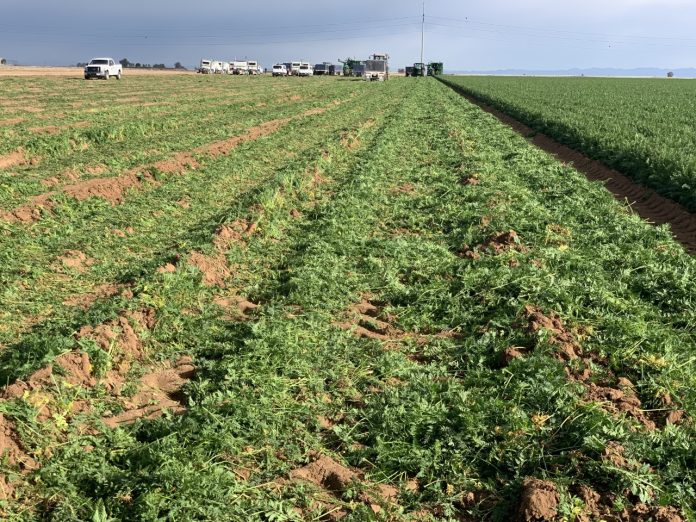

More site-specific data on source, rate, timing and placement of nitrogen fertilizer in carrot production has been generated at the UC Desert Research and Extension Center in Holtville.
For many years, studies conducted in Canada were used to generate nitrogen uptake for the California carrot production system, leaving desert carrot growers in a very dissimilar climate, to rely on their own experience or on the Canadian studies for best practices in carrot fertilization.
Research conducted by Imperial County CE Irrigation and Water Management Advisor Alaiasghar Montazar, UCCE Nutrient Management Specialist Daniel Geisseler and Michael Cahn, UCCE irrigation and water resources advisor, developed information for desert growers based on their field locations, climate and production systems. Funding for the study was provided by the CDFA’s Fertilizer Research and Education Program and the California Fresh Carrot Advisory Board. The new research, based on local conditions, is expected to benefit carrot growers in Imperial and Kern counties where most of the state’s carrots are grown.
Reliable data gathered under field conditions gives growers solid reference points for when and at what rate to irrigate and apply fertilizers in the low desert environment, Montazar said. One of the key findings of the research was that carrots’ nitrogen uptake is generally low during the first 40 to 50 days after planting, suggesting to growers to limit their fertilizer applications during that period. Montazar said that by tailoring basic guidelines to their site-specific location, growers could maximize the amount of nitrogen taken up by the carrots and minimize the amount of nitrogen leached below the root zone.
”Improving irrigation and nutrient efficiency in the desert production system is what local growers are trying to achieve,” Montazar said. “With improved efficiency and reducing nutrient leaching, we can improve the quality of water in the Salton Sea.”
Montazar is also leading a research team in studying carrot production management practices under specific Kern County conditions and plans to complete that research in 2022.
The Imperial County study, “Spatial Variability of Nitrogen Uptake and Net Removal and Actual Evapotranspiration in the California Desert Carrot Production System”, is published in the journal Agriculture and can be found at doi.org/10.3390/agriculture11080752.
Findings and recommendations also appear in Progressive Crop Consultant: progressivecrop.com/2021/09/new-knowledge-based-information-developed-to-enhance-water-and-nitrogen-use-efficiency-in-desert-fresh-market-carrots/.















